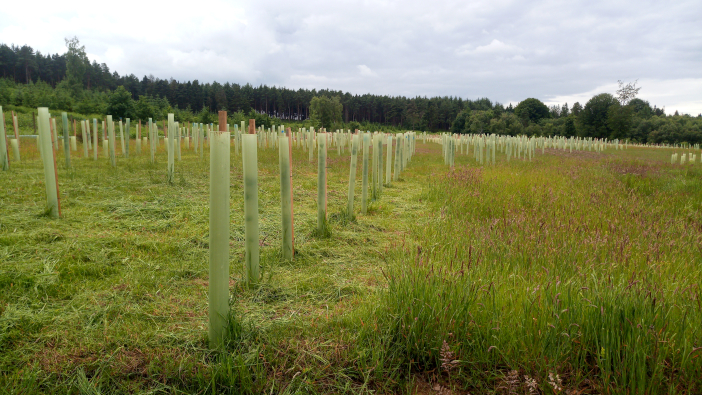As the NFU launches its own Tree Strategy to work alongside the nation’s tree planting ambitions, it is calling for attention to be paid to species and location to maximise successful long-term objectives. The driving principle should be ensuring the right species are selected, appropriately sourced and planted in the right location.
Throughout the strategy, the NFU highlights several key points, including:
- Stressing the need to consider factors such as the tree species, appropriate sourcing to match the location and the long-term objectives – the ‘right tree in the right place’.
- Incentives to bring existing woodlands back into management and this should be a priority over new plantings.
- Stressing the need that land managers that decide to plant trees must have made that decision voluntarily.
- Urging the government to address key existing policy barriers, crucially the existing tenancy clauses which prevent 30% of our agricultural land from engaging in tree planting.
- Believing that the government should reconsider the permanency element of planting trees, which is currently a barrier. Where tree planting is permanent land use change, government must ensure that incentives compensate for the permanent loss in capital value of the land.
- Increased recognition and incentives for trees outside of woodlands. These contribute enormously to our natural environment and landscape features and act as important carbon sinks.
- Believing there is a need for a separate ELMs offer for commercial forestry and large woodlands, recognising the complexity of forestry delivery.
- Wanting see support for our nursery sector, with British sourced and grown saplings encouraged for new plantings.
Commenting from the Great Yorkshire Show, NFU environment forum chairman Richard Bramley said: “Farmers right across the country understand just how important trees, hedgerows and woodland are, and recognise that there is a clear target to increase tree planting.
“They offer obvious benefits to the environment, particularly how they can contribute to British farming reaching its 2040 net-zero ambition, but they are also invaluable for our farmland; providing field boundaries or offering shade to cows and sheep during the summer months.
“The overriding message I hear from farmers is the importance of planting the right tree in the right place and that is why we have put that message front and centre of our Tree Strategy.
“Every farm will be different, so we have to take into account tree species, location, soil type, exposure to weather, to ensure we’re putting the best tree in the best place for long-term success and the desired outcome. It also recognises the importance of land for food production, which is so important for an island nation, especially given the challenges ahead in adapting to climate change.
“With farmers managing more than 70% of our countryside, we are well placed to step up and contribute towards the government’s ambitious tree planting goals. I would encourage them to work with us to achieve this in a sustainable way that preserves our ability to produce high-quality, climate-friendly food for the public.”
You can read the NFU Tree Strategy in full here.


